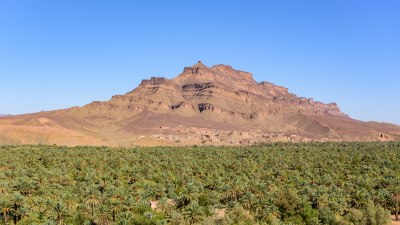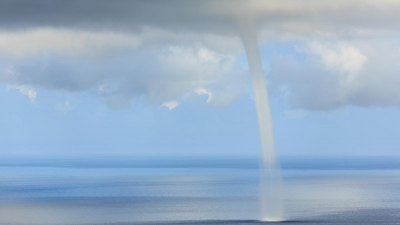Why Fog Can Be Dangerous
Discover the dangers of fog and its effects on visibility and safety.

Image by eberhardgross on Freepik
Fog is a natural atmospheric phenomenon that consists of tiny water droplets suspended in the air near the Earth's surface. While it can create beautiful and serene landscapes, fog also presents significant dangers, particularly in terms of visibility and safety. Understanding why fog can be dangerous is crucial for all individuals, especially those who drive or engage in outdoor activities.
The Nature of Fog
Fog occurs when the temperature and humidity conditions are just right. When warm, moist air cools down, it can hold less moisture, which condenses into tiny droplets that form fog. This dense layer of moisture can significantly reduce visibility, making it difficult for drivers to see the road and for pedestrians to navigate their surroundings. Fog can occur at any time of the year, but it is most common in the fall and spring when humidity levels fluctuate.
Reduced Visibility on the Road
One of the most significant dangers of fog is its effect on road visibility. Clear visibility is paramount for safe driving; however, fog can reduce visibility to just a few feet in some cases. Drivers may not realize how much visibility has been compromised until it is too late. The reduced visibility can lead to confusion regarding distances, speeds, and the locations of other vehicles and pedestrians. Without proper precautions, foggy conditions can lead to serious accidents.
Increased Risk of Accidents
Statistics show that fog is a contributing factor in many traffic accidents. Studies indicate that the likelihood of an accident increases when visibility falls below 1,000 feet. Fog can obscure not only the vehicles on the road but also significant road signs, traffic signals, and other crucial indicators that help drivers navigate. Drivers may be unable to see a stop sign or red light until it is too late, leading to collisions and other dangerous situations.
Common Mistakes Drivers Make in Fog
In foggy conditions, drivers often make several common mistakes that can exacerbate the situation. One of the most prevalent errors is driving too fast for the conditions. Many drivers mistakenly believe that they can maintain their usual speed in fog, but this can lead to disastrous outcomes. Another mistake is failing to use headlights appropriately. In fog, using high beams can reflect off the water droplets and create a blinding effect that further reduces visibility; low beams are typically recommended instead. Furthermore, tailgating is another common mistake, as reduced visibility causes drivers to underestimate stopping distances and the speed of the car ahead of them.
Precautionary Measures
To combat the dangers of fog, drivers and outdoor enthusiasts should take several precautionary measures. Ensuring that vehicles are equipped with functioning fog lights can help improve visibility. Additionally, maintaining a safe following distance is crucial—this allows for increased response time in the event of sudden stops. Isolation is another effective strategy; avoiding distractions and focusing solely on the driving task can help drivers remain aware of their surroundings.
Challenges for Pedestrians and Cyclists
Fog is not only dangerous for drivers, but it also creates challenges for pedestrians and cyclists. With reduced visibility, pedestrians may have difficulty seeing oncoming traffic while trying to cross streets. As such, it is essential for them to wear bright, reflective clothing to increase their visibility in foggy conditions. Additionally, cyclists must exercise extra caution, as they are often less visible than vehicles. Using front and rear lights, even during the day, can significantly enhance safety for cyclists navigating through fog.
Effects on Air Travel
Fog significantly impacts air travel as well. Airports frequently experience delays and cancellations due to foggy conditions. Reduced visibility makes it challenging for pilots to land and take off safely. Air traffic control officials must manage the situation carefully to ensure the safety of all flights. Passengers should stay informed about flight status during foggy weather, as last-minute cancellations or rerouting can occur due to safety protocols.
Impact on Emergency Services
Fog can also impede the operations of emergency services. Firefighters, paramedics, and police may struggle to respond quickly in foggy conditions, further complicating rescue efforts. For instance, long response times can exacerbate medical emergencies, while firefighters may face challenges locating and accessing fire scenes. Therefore, awareness and caution are paramount for all sectors, particularly those dealing with emergencies.
Fog Safety Awareness
Ultimately, fog safety awareness is vital for everyone. The dangers of fog are not limited to one demographic; increased awareness among drivers, pedestrians, cyclists, and aviation professionals can help mitigate risks. Communities can benefit from educational programs that promote safe driving practices, particularly in foggy conditions. This knowledge can also extend to outdoor groups and recreational activities, such as hiking and camping, where fog can be equally dangerous for visibility and navigation.
Technological Advancements in Fog Detection
Technology plays an increasingly crucial role in mitigating the dangers associated with fog. Various technological solutions are being developed to enhance safety and visibility in foggy situations. For example, low-visibility warning systems at key locations can alert drivers to poor conditions ahead. Similarly, applications that provide real-time weather updates can help users plan their journeys around fog-prone areas. Investing in such technologies can significantly reduce the number of accidents caused by fog.
The Future of Fog Awareness
As climate patterns shift and the frequency of severe weather events evolves, fog may become more prevalent in new areas. Increased urbanization and changing land use also contribute to the challenges posed by fog. Therefore, urban planners and decision-makers need to consider the impact of fog when designing safe roadways and public spaces. Long-term strategies for adapting to increased fog conditions will likely become essential components of urban development.
In conclusion, fog can be a beautiful and intriguing natural occurrence, but its dangers should not be underestimated. Reduced visibility significantly increases the risk of accidents on the road and poses challenges for all those who venture outdoors. Through awareness, education, and technological advancements, we can develop better strategies for ensuring safety in foggy conditions. Acknowledging and respecting the potential hazards presented by fog can help save lives and promote safe navigation.











